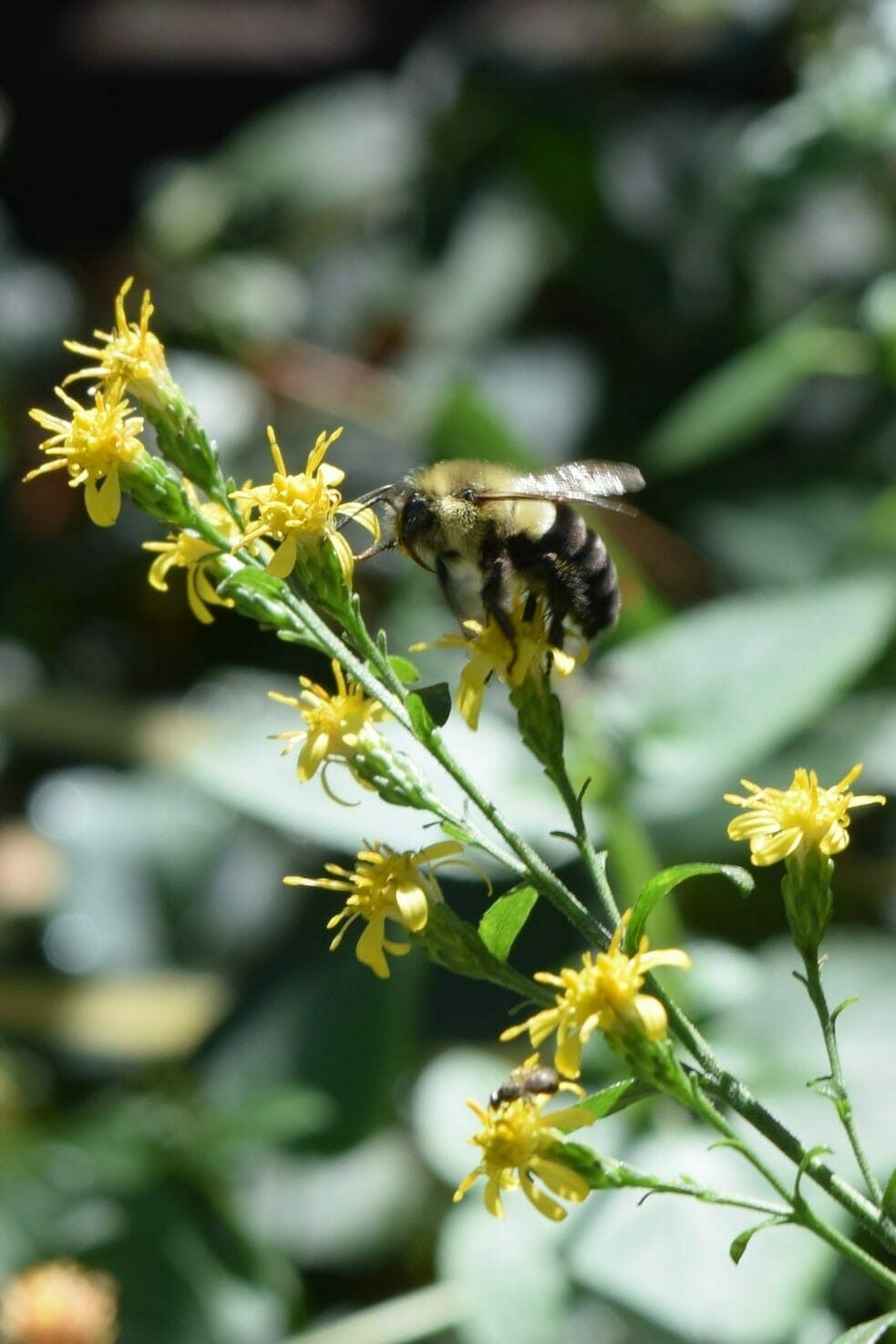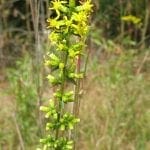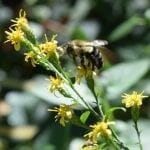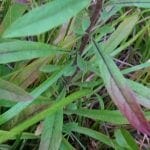- Natural habit
- Native bees depend on goldenrods for fall nectar and pollen
- Foliage and stem
- Close up of flowers
Scientific Name:
Solidago erecta
Common Name:
Slender Goldenrod
Scientific Name Pronounciation:
so-li-DAY-go ee-REK-tuh
Plant Type:
Perennial
Plant Hardiness Zones:
3-8
Plant Hardiness Zone(s):
Usual Size:
1-3 feet H
Flower:
6-9 rays per small yellow flower, flowers arranged into small clusters of which there are many along the stem.
Bloom Time Notes:
Fall
Leaf:
Simple, alternate, nearly glabrous, lower leaves larger and lance shaped.
Fruit:
A seed.
Wildlife:
Used by long-tongued bees, short-tongued bees, wasps, flies, beetles, and butterflies. The caterpillars of many moths feed on the foliage.
Natural Habitat:
Roadsides, old fields, grassy balds.
Propagation:
Seed, division
Bloom Time:
Sun or Shade:
Companion Plants:
Cultural Notes:
Slender Goldenrod (Solidago erecta) is a smooth-stemmed, clumping goldenrod with one or more blooming stems branching from a single stalk. Foliage and stem may be burgundy colored, especially in late fall.
This handsome perennial pairs well with other fall blooming flowers like blazing stars (Liatris pilosa, for example) and native grasses.
Contrary to popular belief, goldenrod is not a source of fall allergies because its pollen is not light enough to be transported on the wind. Goldenrods are insect pollinated and highly sought after by native bees and butterflies for pollen and nectar. Fall allergies are associated with wind-pollinated plants such as ragweed (Ambrosia artemisiifolia), an annual plant with greenish flowers that is often unnoticed.
Other Common Names: Showy Goldenrod, Wand Goldenrod
Other Scientific Names: Solidago speciosa var. erecta





